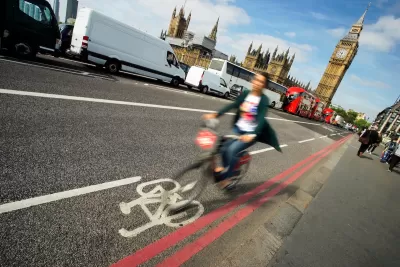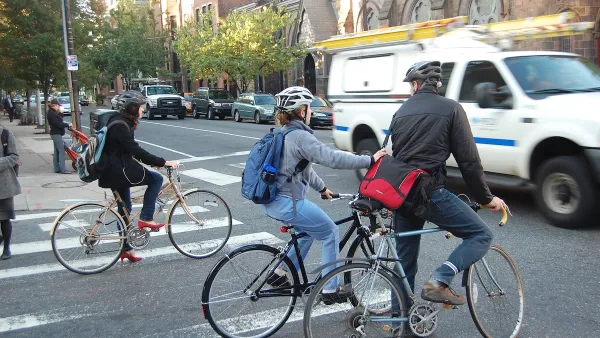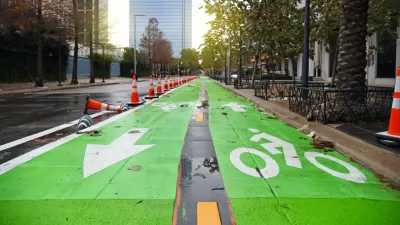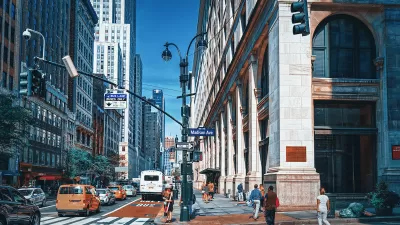Bike infrastructure tends to make vehicle travel faster, improve road safety, and bring more revenue to local businesses.

In an article for CBC, Nicole Mortillaro highlights research from cities around the world that shows that, despite popular misconceptions, bike lanes do not increase traffic congestion.
The article is in part a response to a contentious proposed Ontario, Canada law that would “would require municipalities to get provincial approval to install any bike lanes that would remove a lane of vehicle traffic.”
According to studies, dedicated bike lanes increase the number of people biking and reduce the number of cars on the street. “Bike Share Toronto statistics show that ridership on its network of shared bikes has increased dramatically since 2015, when 665,000 bike trips were made annually. In 2023, that shot up to 5.7 million trips.”
In New York City, the average time it takes cars to travel on a major thoroughfare decreased from 4.5 minutes to 3 minutes after bike lanes were installed. “Other case studies found either no impacts on traffic, or minimal delays — anywhere from a few seconds to just over a minute.”
The article highlights other studies from Canada and beyond, noting that bike lanes are also shown to increase safety for pedestrians by decreasing traffic speeds. And in many cases, they also bring additional revenue to local businesses.
FULL STORY: Do bike lanes really cause more traffic congestion? Here's what the research says

Planetizen Federal Action Tracker
A weekly monitor of how Trump’s orders and actions are impacting planners and planning in America.

Maui's Vacation Rental Debate Turns Ugly
Verbal attacks, misinformation campaigns and fistfights plague a high-stakes debate to convert thousands of vacation rentals into long-term housing.

Restaurant Patios Were a Pandemic Win — Why Were They so Hard to Keep?
Social distancing requirements and changes in travel patterns prompted cities to pilot new uses for street and sidewalk space. Then it got complicated.

In California Battle of Housing vs. Environment, Housing Just Won
A new state law significantly limits the power of CEQA, an environmental review law that served as a powerful tool for blocking new development.

Boulder Eliminates Parking Minimums Citywide
Officials estimate the cost of building a single underground parking space at up to $100,000.

Orange County, Florida Adopts Largest US “Sprawl Repair” Code
The ‘Orange Code’ seeks to rectify decades of sprawl-inducing, car-oriented development.
Urban Design for Planners 1: Software Tools
This six-course series explores essential urban design concepts using open source software and equips planners with the tools they need to participate fully in the urban design process.
Planning for Universal Design
Learn the tools for implementing Universal Design in planning regulations.
Heyer Gruel & Associates PA
JM Goldson LLC
Custer County Colorado
City of Camden Redevelopment Agency
City of Astoria
Transportation Research & Education Center (TREC) at Portland State University
Jefferson Parish Government
Camden Redevelopment Agency
City of Claremont





























